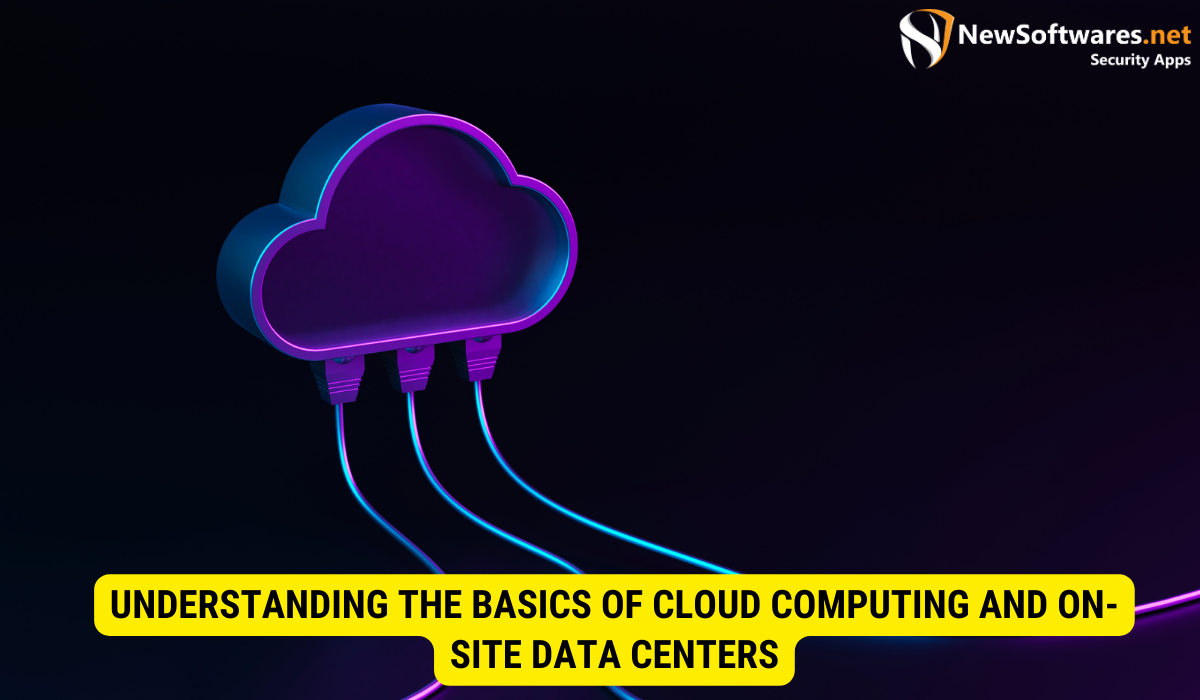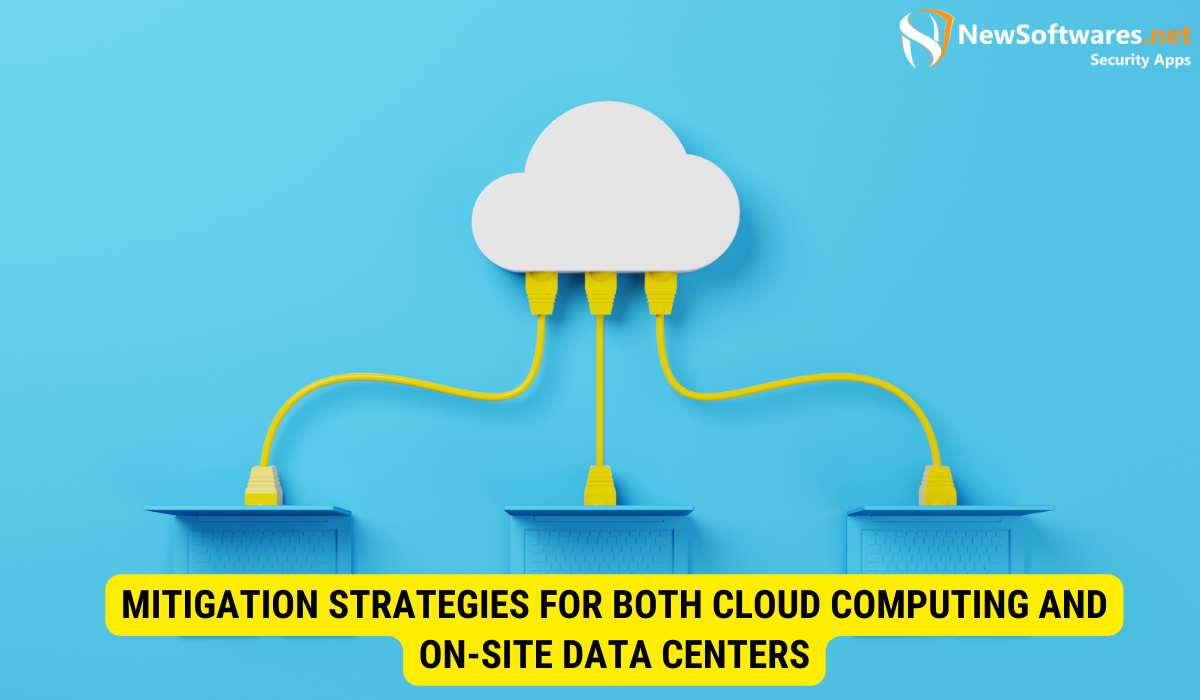Both cloud computing and on-site data centers have their unique security features and challenges. The choice depends on factors like organizational needs, budget, and compliance requirements. Mitigation strategies for both include multi-factor authentication, regular audits, encryption, and physical access controls for on-site data centers.
Cloud computing and on-site data centers are two popular options for organizations to manage and store their data. However, when it comes to security, it is essential for businesses to understand the key differences and assess which option best suits their needs. I will explore the basics of cloud computing and on-site data centers, examine their respective security architectures and infrastructures, compare their strengths and weaknesses, and provide mitigation strategies for enhancing security in both environments.
Understanding the Basics of Cloud Computing and On-Site Data Centers

Defining Cloud Computing
Cloud computing refers to the delivery of computing services, including storage, servers, databases, software, and networking, over the internet. It enables users to access and utilize these resources on-demand, without the need for on-site infrastructure. Cloud providers often leverage virtualization technology to maximize resource utilization and scalability.
What is an On-Site Data Center?
An on-site data center, also known as an in-house or private data center, is a physical facility that houses an organization’s servers, storage devices, networking equipment, and other necessary infrastructure. Unlike cloud computing, the organization maintains full control and responsibility for all aspects of the data center’s operation and security.
The Security Architecture of Cloud Computing
Key Features of Cloud Security
Cloud security incorporates several key features to protect data and infrastructure from unauthorized access, data breaches, and other potential risks. These features include:
- Identity and Access Management (IAM): Cloud providers implement robust IAM systems to control user access, authenticate identities, and enforce stringent authentication mechanisms.
- Data Encryption: Encryption is utilized to safeguard data at rest and in transit, ensuring that even if intercepted, the information remains unreadable.
- Network Security: Cloud providers employ firewalls, intrusion detection systems (IDS), and virtual private networks (VPNs) to protect networks from unauthorized access and network-based attacks.
- Physical Security: Cloud data centers are equipped with strict physical security measures, including surveillance cameras, access controls, and biometric authentication, to prevent unauthorized physical access.
- Compliance and Certifications: Cloud providers adhere to various industry standards and regulations, such as ISO 27001, to ensure compliance and provide assurance to customers regarding data security and privacy.
Potential Vulnerabilities in Cloud Computing
Although cloud computing offers robust security features, there are potential vulnerabilities to be aware of. These vulnerabilities include:
- Data Breaches: Inadequate access controls or misconfigurations can lead to unauthorized access and data breaches.
- Shared Resources: Since cloud resources are shared among multiple users, there is a risk of data leakage or cross-tenant attacks if proper isolation mechanisms are not in place.
- Dependency on Providers: Organizations must rely on the security measures implemented by their chosen cloud provider, making it crucial to assess the provider’s reputation, track record, and security certifications.
- Legal and Jurisdictional Concerns: Depending on the geographical location of the data centers, data stored in the cloud may be subject to different laws and regulations, potentially impacting data privacy and compliance.
The Security Infrastructure of On-Site Data Centers
Main Components of On-Site Data Center Security
On-site data centers require a robust security infrastructure to protect critical assets. The main components typically include:
- Physical Access Controls: On-site data centers implement measures such as security cameras, badges, and biometric authentication to restrict physical access to authorized personnel only.
- Firewalls and Intrusion Detection Systems (IDS): Network security appliances ensure that incoming and outgoing network traffic is monitored and filtered, protecting against unauthorized access and potential threats.
- Server Hardening: On-site data center servers are hardened through the implementation of security best practices such as regular patching, disabling unnecessary services, and using secure configurations.
- Backup and Disaster Recovery: Robust backup and disaster recovery solutions are crucial for on-site data centers to quickly restore operations in case of data loss or system failures.
- Employee Training and Awareness: Regular training programs help educate employees on security best practices, data handling procedures, and the importance of maintaining a secure environment.
Possible Risks in On-Site Data Centers
While on-site data centers offer organizations greater control, there are potential risks to be considered:
- Physical Vulnerabilities: On-site data centers are susceptible to physical threats such as theft, natural disasters, and accidents, requiring the implementation of appropriate security measures.
- Resource Scalability: Scaling on-site data centers can be costly and time-consuming, as businesses need to invest in additional hardware, power, and cooling infrastructure.
- Human Error: Misconfigurations, unauthorized access, and other security incidents can occur due to human error or lack of awareness, emphasizing the importance of stringent access controls and employee training.
- Cost and Maintenance: Owning and maintaining an on-site data center involves significant upfront costs, ongoing maintenance, and the need for skilled IT personnel to ensure proper security and operation.
Comparing the Security of Cloud Computing and On-Site Data Centers
Strengths and Weaknesses of Cloud Computing Security
Cloud computing security offers several advantages:
- Scalability and Flexibility: Cloud providers offer the flexibility to scale resources based on demand, allowing organizations to adapt quickly to changing business needs.
- Advanced Security Features: Cloud providers are equipped with specialized security teams and technologies, providing advanced threat detection and protection.
- Cost-Effectiveness: Cloud computing eliminates the need for large upfront investments, as organizations can pay for resources on a pay-as-you-go basis.
Despite these advantages, cloud computing security has certain weaknesses:
- Dependency on a Third Party: Organizations must rely on cloud providers for security, making it crucial to choose reputable, reliable providers.
- Regulatory Concerns: Compliance with regulations may be challenging, as organizations need to ensure that the chosen cloud provider meets the necessary certifications and standards.
Pros and Cons of On-Site Data Center Security
On-site data centers offer specific benefits:
- Full Control: Organizations have complete control over the entire infrastructure and security measures, allowing for customized solutions tailored to specific needs.
- Physical Security: On-site data centers provide direct control over physical access, enhancing security against physical threats.
However, on-site data center security comes with drawbacks:
- Higher Costs and Maintenance: Building, operating, and maintaining an on-site data center involves substantial upfront and ongoing costs, including hardware, infrastructure, and personnel.
- Scalability Challenges: Expanding on-site data centers can be time-consuming and costly, requiring additional resources and infrastructure.
Mitigation Strategies for Both Cloud Computing and On-Site Data Centers

Best Practices for Enhancing Cloud Security
To enhance security in cloud computing environments, organizations should consider the following best practices:
- Multi-Factor Authentication (MFA): Implement MFA to add an extra layer of security and protect against unauthorized access.
- Regular Audits: Conduct regular security audits to identify and address any vulnerabilities or misconfigurations.
- Data Encryption: Use encryption techniques to protect sensitive data at rest and in transit.
- Vendor Due Diligence: Thoroughly assess potential cloud providers, considering their security practices, certifications, and track record.
- Employee Awareness: Educate employees about security best practices, data handling procedures, and potential threats.
Effective Measures for Strengthening On-Site Data Center Security
To strengthen security in on-site data centers, organizations should implement the following measures:
- Physical Access Controls: Use robust physical access controls such as surveillance cameras, biometric authentication, and visitor management systems.
- Firewall and Intrusion Prevention Systems (IPS): Deploy firewalls and IPS solutions to monitor and filter network traffic, protecting against unauthorized access and potential threats.
- Regular Patching and Updates: Keep servers and infrastructure up to date with the latest security patches and updates to mitigate vulnerabilities.
- Backup and Disaster Recovery Planning: Implement robust backup and disaster recovery solutions to ensure business continuity in the event of data loss or system failures.
- Security Training and Incident Response: Train employees on security best practices, incident response protocols, and the importance of maintaining a secure environment.
Key Takeaways
- Cloud computing and on-site data centers differ in terms of their security architectures and infrastructures.
- Cloud computing provides scalability, flexibility, and advanced security features but relies on third-party providers and may pose regulatory challenges.
- On-site data centers offer full control, physical security, and customization but require higher costs, maintenance, and scalability challenges.
- Best practices for enhancing cloud security include multi-factor authentication, regular audits, data encryption, and employee awareness.
- Effective measures for strengthening on-site data center security include physical access controls, firewalls, regular patching, backup and disaster recovery planning, and security training.
FAQs (Frequently Asked Questions)
Is cloud computing more secure than using an on-site data center?
Both cloud computing and on-site data centers have their own security advantages and challenges. The choice depends on various factors, such as the organization’s specific needs, budget, compliance requirements, and risk tolerance.
How can organizations ensure cloud providers are reliable and trustworthy?
Organizations should thoroughly assess cloud providers by considering their security practices, certifications, compliance with regulations, track record, and availability of technical support. Additionally, conducting reference checks and seeking recommendations from trusted sources can help in the evaluation process.
What are the primary risks associated with on-site data centers?
The primary risks associated with on-site data centers include physical vulnerabilities, resource scalability challenges, human error, and the need for ongoing cost and maintenance.
Can organizations combine both cloud computing and on-site data centers for enhanced security?
Yes, organizations can implement a hybrid approach by combining both cloud computing and on-site data centers. This allows them to leverage the benefits of both environments while addressing specific security and compliance requirements.
What are the key factors to consider when planning mitigation strategies for both cloud computing and on-site data centers?
When planning mitigation strategies, organizations should consider factors such as the sensitivity of the data, regulatory compliance requirements, resource constraints, budget considerations, and the level of control and customization needed by the organization.
Conclusion
Evaluating the security of cloud computing versus on-site data centers requires a comprehensive understanding of their respective architectures, infrastructures, strengths, and weaknesses. By considering key factors, such as scalability, flexibility, control, cost, and potential risks, organizations can make informed decisions regarding their data security requirements. Whether utilizing cloud computing or maintaining an on-site data center, implementing best practices and mitigation strategies is crucial to safeguard valuable data and maintain a secure environment.
